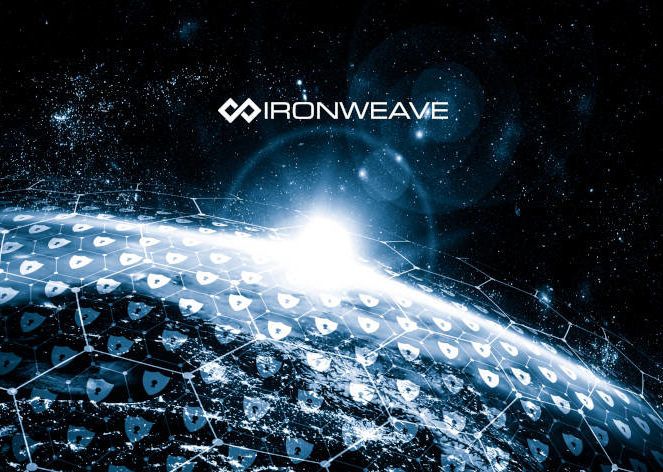IronWeave Unveils the Next Level of Blockchain Security

A blockchain fabric for Web2, Web3 businesses or crypto-native end users. In short, for everyone.
What will the business landscape look like when there’s a blockchain platform for people, businesses, organizations, or any other actor or agent? A blockchain platform that people and businesses will actually use. Where anyone can securely, privately, and economically interact online at a moment’s notice.
What if instead of setting up a group call, you could set up or ‘publish' a group business relationship? This relationship would have a predefined rule set enshrined in smart contracts, external logic or custom block types.
We could spin up trusted relationships.
IronWeave is the next generation layer-one blockchain fabric. In other chains, which we call monolithics, one block is placed on top of the other, in serial fashion. In contrast, with IronWeave there's no limit to the number of interacting chains, and they each can interact independently, and in parallel, at the block level. - David Iseminger, Co-founder & CEO
In IronWeave, this fabric of chains has privacy woven into everything. Imagine chains that enforce government and industry regulations for Personally Identifiable Information (PII). Each chain is more secure than a monolithic blockchain such as Ethereum, Solana, and others, because data in IronWeave is encrypted at the block level and leverages the security of each participating chain.
In recent conversations with potential partners, end users, and others, we’re hearing some of the same questions crop up. We’re grateful that IronWeave is generating all this curiosity so we’ll answer a few of these questions here.
How do I get started on IronWeave?
In essence, you create a subscription. When you create a chain on IronWeave, you control how and who interacts with that chain. You set permissions for what can be done on your chain. Web2 companies and other developers access IronWeave via APIs, which are accessible from any modern programming language. As a result, they won’t need to learn new software languages to work on our platform.
Each IronWeave participant will have a wallet, whether a traditional wallet or an app or an NFT that has built-in wallet functionality. That means every actor on IronWeave will be able to make or participate in financial transactions. And your wallet will provide you with a unique, secure and private view into your IronWeave chains and interactions.
Who will I see building on IronWeave?
We want to be accessible to a wide range of users and developers. So we’re making sure that other blockchains, dApps, Web2 businesses, and individuals can all create chains on IronWeave.
What will we be able to do on IronWeave?
Whatever activity the dApp, or service, or integration wants to enable. Messages, game exchanges, value exchange, file exchange, email submission, all of which can live on-chain, and so on. We’re excited to discover the inventive uses people think of for using IronWeave.

How is the data from these actions stored?
Data is stored as blocks on each participant's participating chain. There will be dedicated validator nodes for different data sets, whether that’s value exchange or oracle-like data providers. This is a big differentiator for us. Other chains don’t have on-chain storage, and certainly not flexible-sized blocks that can fit any sort of data, big or small.
Who pays the gas fees?
Everyone wants to know the answer to this one.
We think you’ll find IronWeave’s flexibility on gas fees very exciting. (our team certainly does!)
It could be that participants pay the gas fees for using the dApp and using IronWeave, which is what you see in current-generation monolithic chains. What you also might see is instances that are designed to be a "single payer chain" where IronWeave fees are paid by the app publisher, and they in turn charge users a flat (monthly, e.g.) fee for use. A “Single payer chain" is like a Web2 app or service that charges monthly for the service. That's the low-friction transition from Web2 to Web3 that we enable, and which we know will be very attractive to people accustomed to that sort of software economic model.
How does IronWeave keep my data private and let me control access?
Each block is encrypted (opaque) and accessible/viewable only by its participants. So any action from someone in IronWeave is invisible (or actually, according to them, non-existent) to those not participating in that particular interaction/block.
Only the owner or participant of any block can see its data. So of course, since you're a participant in every block on any chain you own, you can see all that data. The same goes for chains owned by anyone. I can't see your chains or your blocks, except for any blocks where I'm a participant. When that's the case, since that's a shared block placed on both your chain and my chain, it will also exist / be visible on my chain.
Permissions in IronWeave are similar to those in a Windows or Linux environment. You can set granular control for various actions on each chain or block. You can also set organizational permissions. Just like a corporate computer can have complex permissions and access rights, you could set such permissions on a given chain or an individual block, or you could have a computer at grandpa's house that can have a simple set of permissions to control.
How IronWeave Works: Some Examples
We’ll look at a messaging app as an example.
You’ll have a primary subscription chain created for you automatically when you install the app. This is yours and yours alone. Every text or message you exchange will go onto your single chain as individual blocks shared with the other participants. Each message will be its own block, stored on your messaging app chain.
Then you might share a file. That would be another chain of yours - a file chain - that has your messaging chain as one of its participants. Both chains are yours, and both of those chains are participants on that shared file block, as it will be for the others who share access to that file. So one file shared between 2 people might include 4 chains (messaging chain of each, file store chain of each).
And the cool thing to remember is, just because that other file chain is a participant does not mean you can access or even know about any other block on that other person's (file) chain. Access will be that specific, down to each individual interaction.
Another example - for a payment transaction, a similar set of chain creations and access permissions will also be possible on IronWeave.
This need-to-know and need-to-access functionality is really powerful and unique to IronWeave. Keep in mind the level of security that is being created by having multiple chains and multiple encrypted blocks for each chain, with each block getting its own unique set of encryption keys.
Again, this is powerful security that will appeal to Web2 businesses that have, rightfully, been hesitant to move to Web3 solutions. They have to be regulatory compliant and protect their clients’ assets.
What’s next?
What might be done on a massively scalable platform that can fully store data on-chain? In our next article we’ll go deeper on what can be done and how we make it happen.
